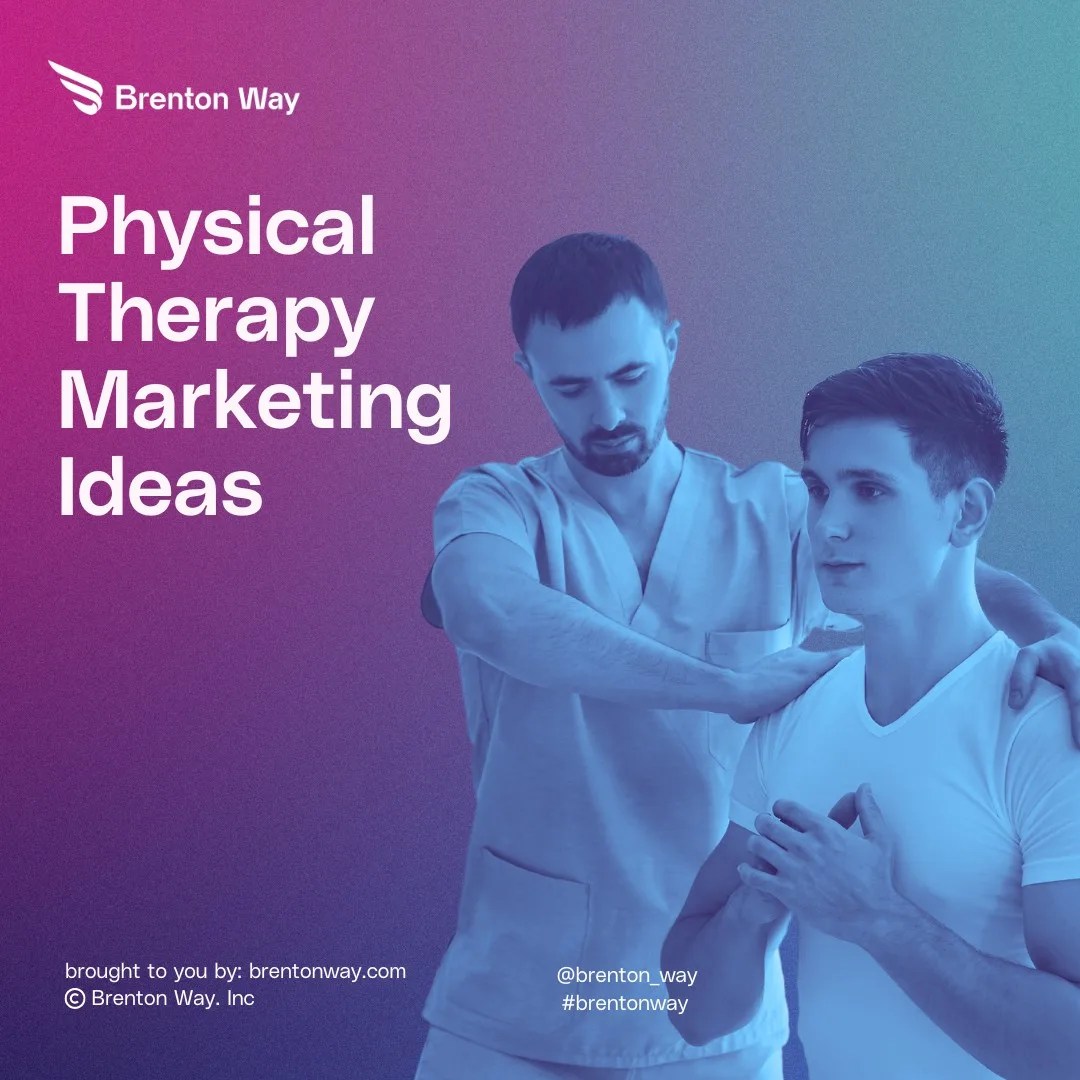
The beauty and personal care industry is expected to reach a massive revenue of US $646 billion by 2024, experiencing a projected annual growth rate of 3.33% (CAGR 2024-2028). Source The concept of beauty changes every then and now, and so do the trends related to it. In this article, you will see which techniques […]
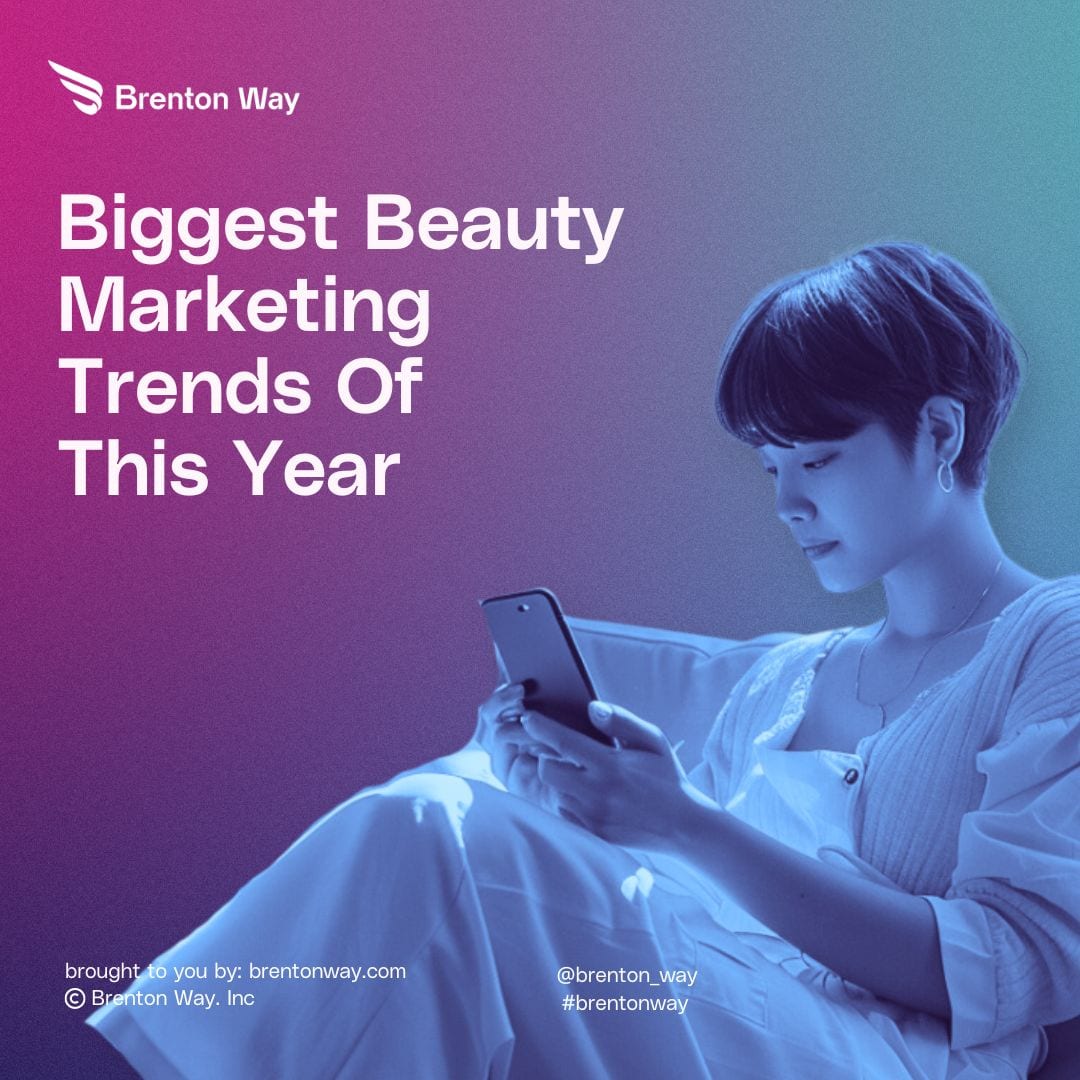
The beauty and personal care industry is expected to reach a massive revenue of US $646 billion by 2024, experiencing a projected annual growth rate of 3.33% (CAGR 2024-2028).
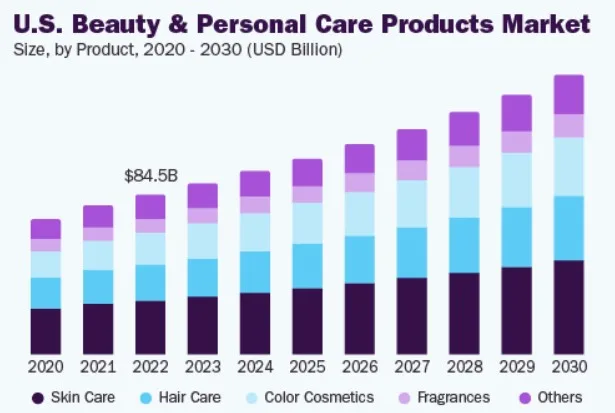
The concept of beauty changes every then and now, and so do the trends related to it.
In this article, you will see which techniques are in right now and which brands are implementing them. You will also see how these current beauty marketing trends are impacting the cosmetics market.
You can really see a major shift happening in the beauty marketing trends lately as people are demanding eco-friendly and sustainable products.
The worldwide market for Sustainable Beauty and Skincare was worth $181.23 billion in 2023. It is expected to grow at a CAGR of 7.8% to reach $285.60 billion by 2030.
We’re all becoming a lot more conscious about the environmental impact of the cosmetics, skincare, hair products, and other personal care items we use every day.
Nobody wants to be contributing to further damage to the planet’s delicate ecosystems.
45% of American consumers said that using only 100 percent natural ingredients was one of the most crucial factors for sustainable beauty products.

The above graph demonstrates the percentage of people wanting to buy sustainable products.
The sustainable beauty marketing trend covers a few key areas. Packaging is one of the biggest marketing issues brands are tackling.
They are doing everything they can to cut down on plastic, switch to recyclable materials, and use more post-consumer recycled plastics.
Brands like Love Beauty and Planet are already using 100% recycled bottles.
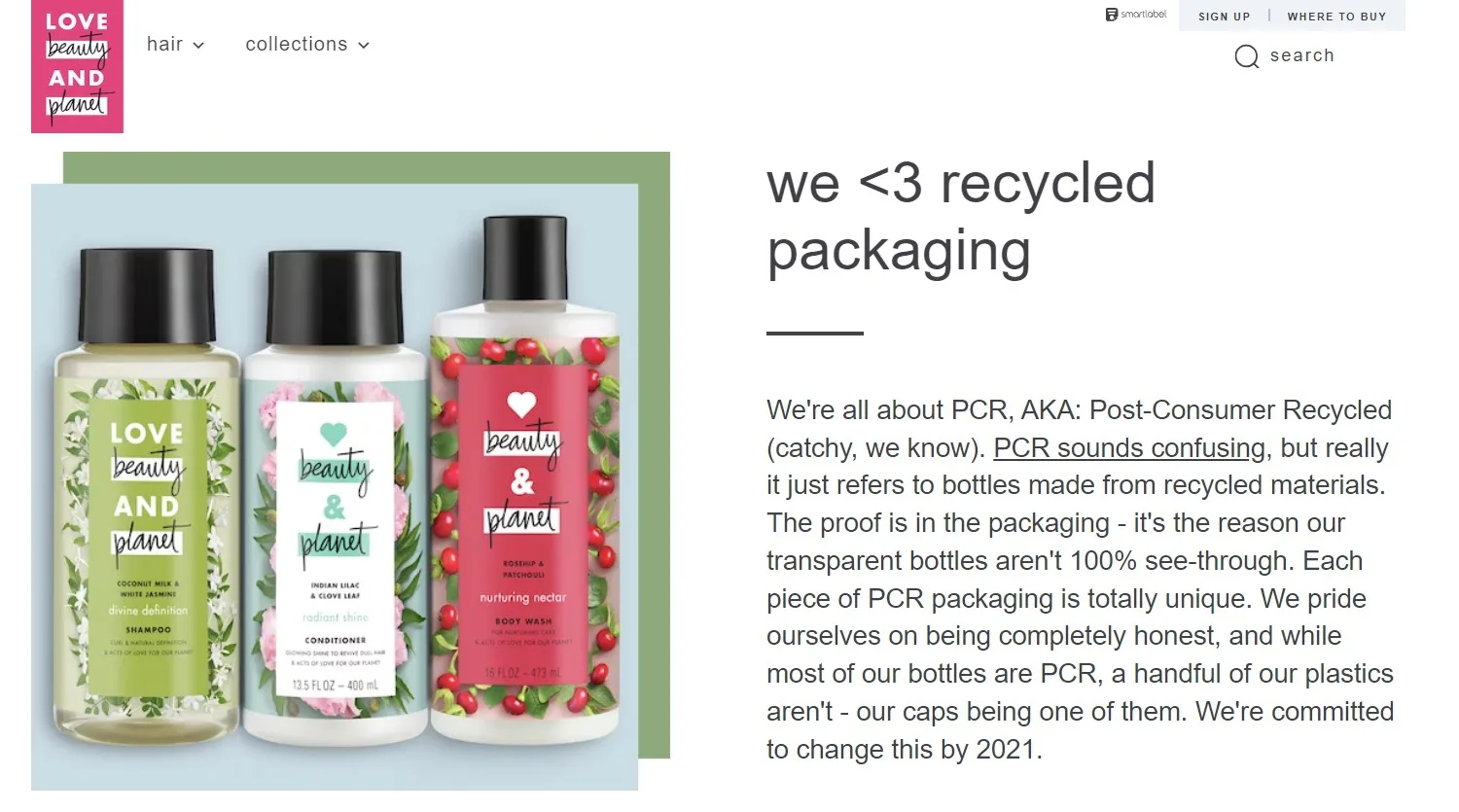
Seed Phytonutrients have gone all-in on glass and aluminum.
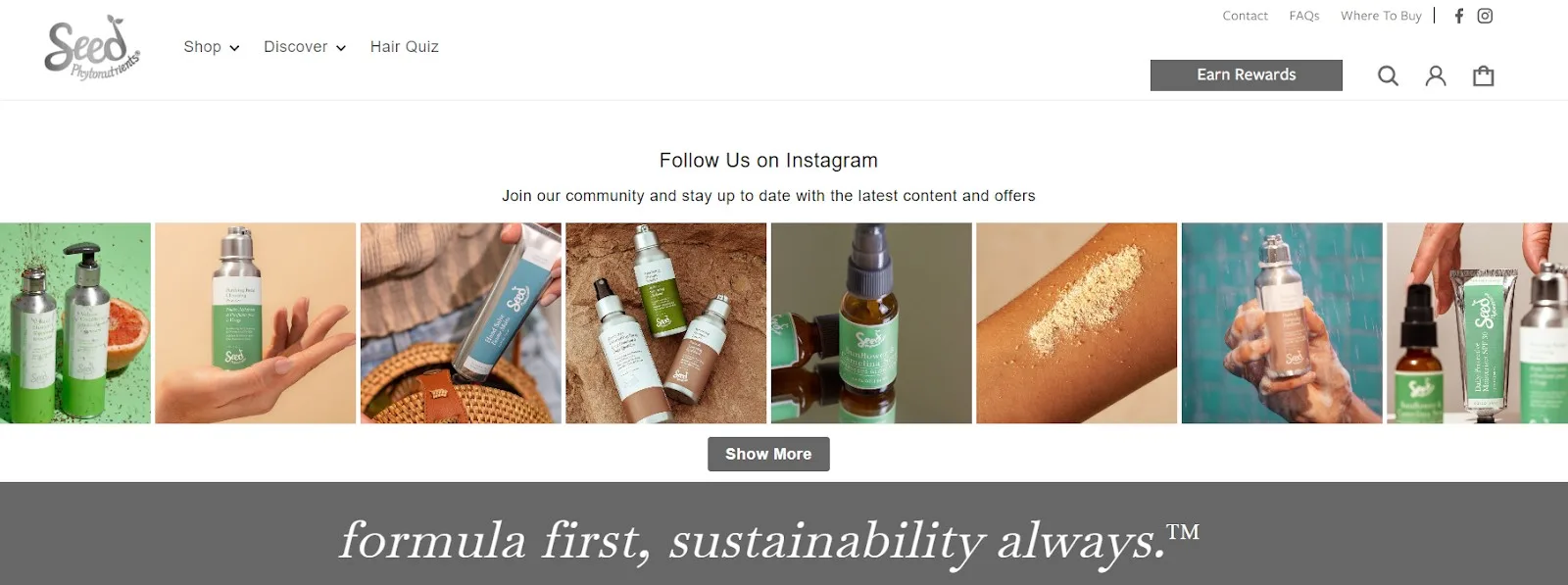
Even big mainstream companies like L’Oreal have roadmaps to incorporate more recycled plastic and introduce refillable packaging options soon.

Another leading beauty industry trend is personalized beauty. It is anticipated that the personalized beauty market will exceed $51 billion in value by 2026.
Personalized beauty is hitting the market very effectively. Companies use all kinds of technology and AI to personalize a buyer’s experience.
For example, if a company starts a new range of toners, it creates different variations.
It means that there will be different toners for oily, dry, and combination skin.
72% of customers are ready to spend extra money on personalized beauty items.
Beauty brands are marketing to cater to each individual’s unique needs. For example, you can actually get a serum or moisturizer formulated just for your particular skin concerns and conditions.
You can customize your skincare and makeup routine according to your skin type, preferences, and environmental factors.
Not everyone can go to stores to find a perfect match for their individual needs.
So, to help solve that problem, there is a new trend in beauty apps. Users can take a quiz that has questions related to their skin.
According to their quiz answers, users will receive personalized recommendations, such as which serum will go best for their oily skin.
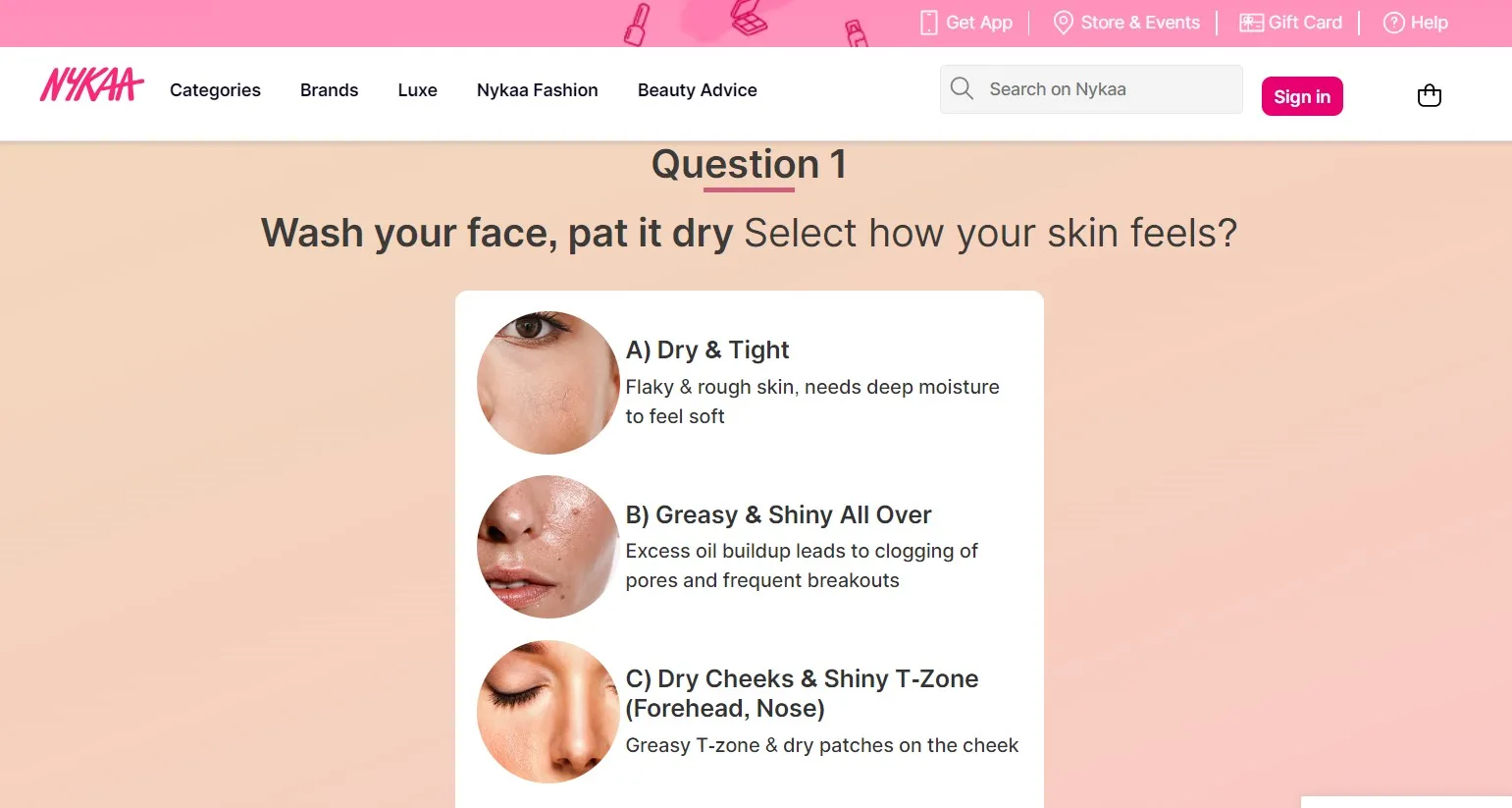
Nykaa is a beauty app that has implemented quiz personalization.
Now, consumers can also personalize their haircare.
A lot of brands are implementing this personalized marketing technique. If you are also looking to leverage this strategy, you can get in touch with our beauty marketing agency.
Under this strategy, users take quizzes about their hair type and receive bottles of shampoo and conditioner specially made for their hair.
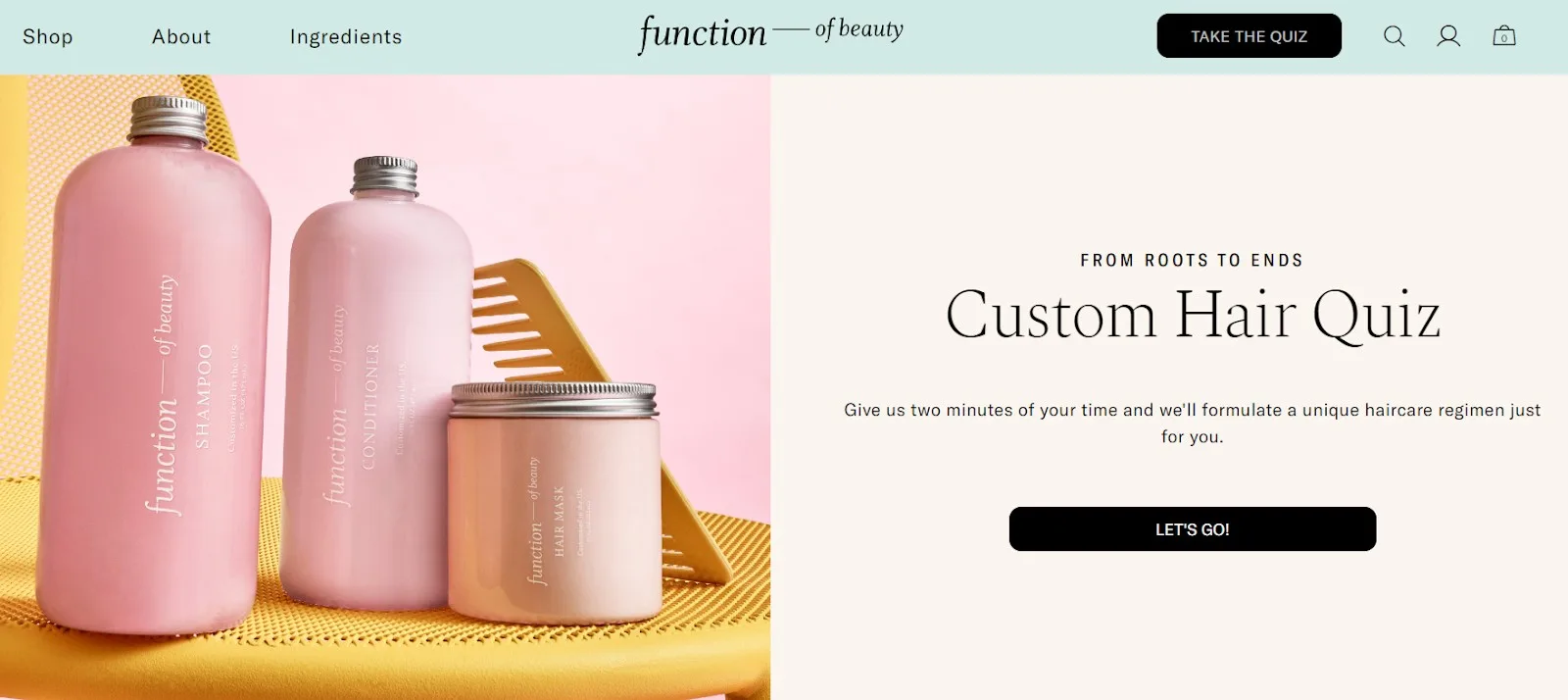
Function of Beauty is one of many brands that offer this kind of personalization in haircare.
These haircare companies even let you choose the fragrance and color of the product.
From 2022 to 2027, the Global Augmented & Virtual Reality in Cosmetic & Beauty Market is forecasted to increase by 25.5% CAGR.
The technology of augmented reality virtual try-on apps and tools in the beauty world is revolutionizing how we shop for makeup and other beauty products.
Customers have a 2.4 times higher chance of purchasing when utilizing virtual try-ons.
Instead of having to actually swatch and apply every lipstick, eyeshadow, or foundation shade to see how it looks, you can just virtually try them on using your phone camera or webcam.
With a few taps, the AI can simulate the exact shade and finish on your own face in real time.
Sephora has mastered this marketing strategy, allowing you to try on multiple looks and products at once.
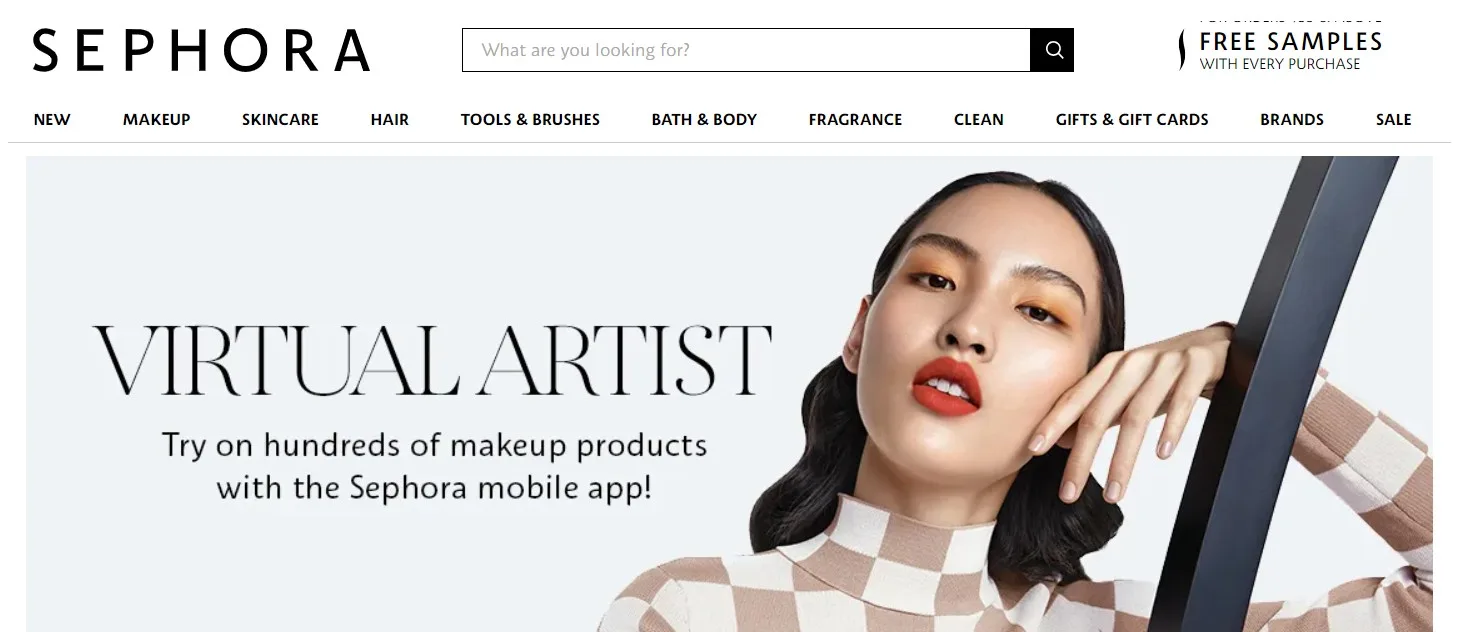
So you can see how a complete full face of makeup would look – different eye looks, lip colors, the works – all before committing to a purchase.
Augmented reality has been especially helpful for buying complexion products. It helps cut down on a ton of returns and product wastage, too.
The beauty industry has come far in terms of inclusivity lately.
82% of people search for racial diversity in beauty advertisements.
Around 40% of Gen Z consumers prioritize diversity and inclusion as the top brand values when buying beauty products.
For years, so many women and people of color felt completely left out and ignored when it came to finding products for their diverse skin tones and types.
Brands seemed to cater only to a very narrow definition of “beauty.” There used to be very limited shades of foundations and concealers
Nowadays, more and more brands are waking up and consciously expanding their product lineups to be inclusive of all ethnicities and skin conditions.
Almost half (47%) of beauty product consumers prefer to purchase from brands that promote diversity and inclusivity.
Beauty brands are giving out versatile, comprehensive shade ranges for complexion makeup instead of those limited, one-note offerings.
Fenty Beauty came out with an unprecedented 40 shades of pro’filter foundation to cover the whole spectrum of deep to fair tones.
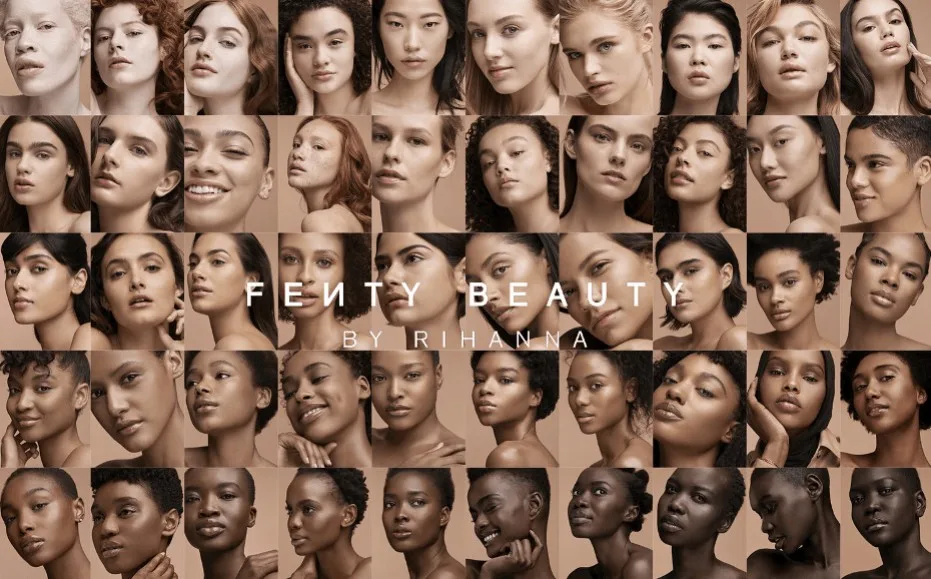
Their inclusivity marketing was so well executed that the other brands also started following the same launching and marketing strategy.
Make Up For Ever quickly followed suit with foundation portfolios and launched 40 shades.
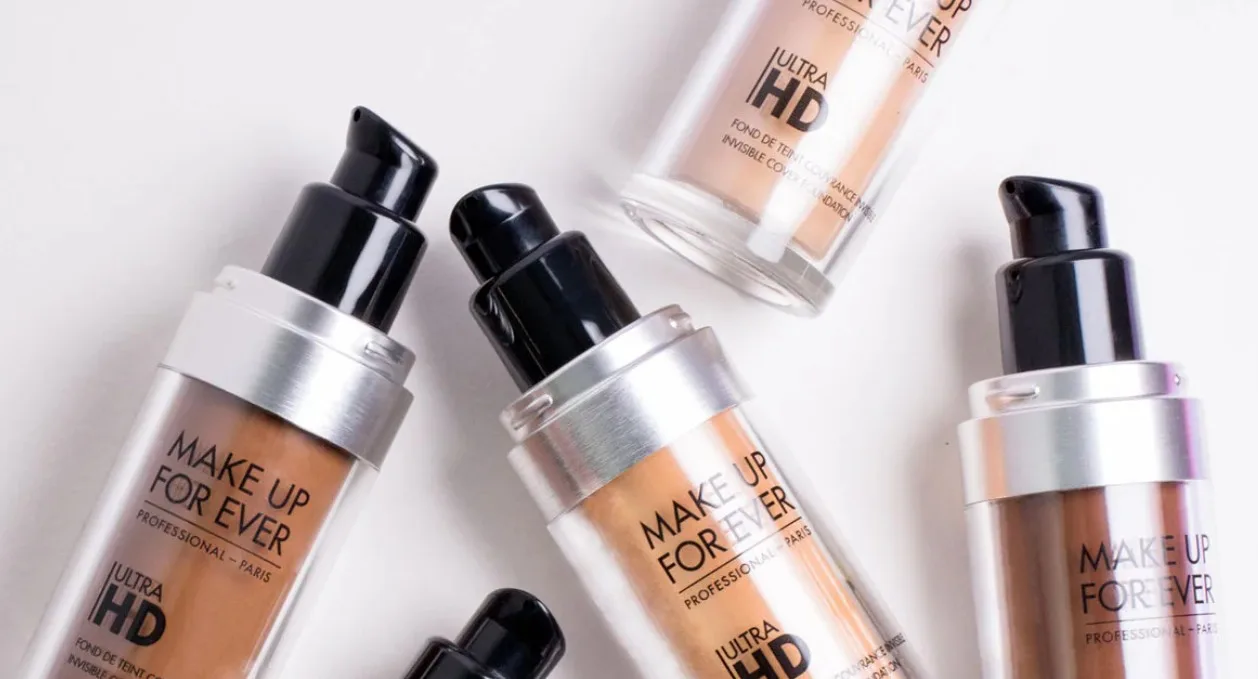
And it goes beyond just complexion – brands are also bringing more versatile products for different hair types, skin concerns like hyperpigmentation, and so much more.
Beauty tech-driven purchases have produced around 3.77 billion U.S. dollars in revenue in 2021 within the global market.
The skincare tech space is just exploding with all these innovative new tools and gadgets.
Skincare devices market is projected to reach US$ 101.5 Billion by 2033 with a 15.6% CAGR from 2023 to 2033.
We’ve got all these smart beauty devices that sync up to apps and provide customized routines based on your individual skin analysis.
For example, Shinsegae Group implemented smart mirrors in their beauty stores, which turned out to be a great marketing strategy.
With these mirrors, you just take a selfie, and the AI analyzes your pores, dark spots, and wrinkles.
Then, it builds out an entire multi-step regimen of which products to use and what areas to focus on.

Another example is the LED mask craze.

Celebs and influencers are constantly posting selfies in those futuristic-looking light therapy masks that claim to zap away blemishes and signs of aging.
Between the blue, red, and yellow light settings, you can choose whichever ones fit you.
Post-pandemic, there has been an acceleration towards the minimalist beauty trend.
A refreshing “less is more” mentality is spreading where people are actively streamlining their beauty habits.
Everyone is craving more simplicity and functionality – products that can multitask so that there is no hoarding of tons of bottles.
Beauty buyers are gravitating towards those versatile, hardworking products that can replace 3 to 4 items in their regimen.
Brands like Saie and Smashbox are infusing skincare ingredients as a beauty marketing trend into makeup products and presenting them as “skincare makeup.”
Their whole philosophy is creating ultra-simple, multi-purpose products without any extra hassles.
For example, Saie tinted moisturizer can be used as a serum, moisturizer, and primer all-in-one.
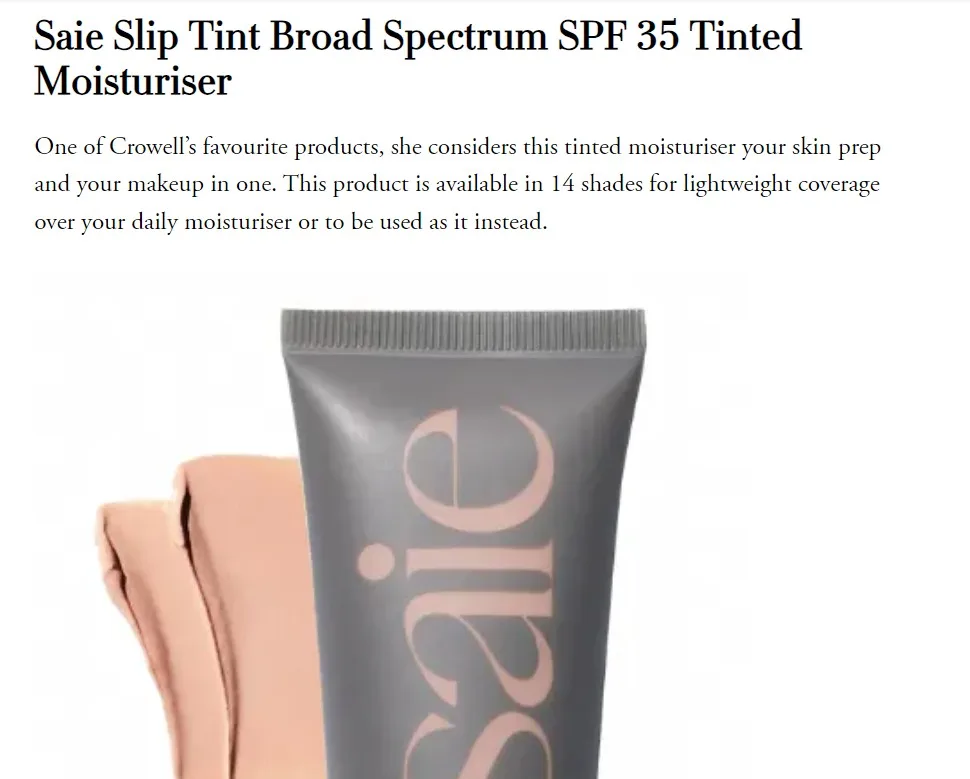
The Smashbox halo correcting pen can be used as a highlighter, concealer, corrector, and contour.
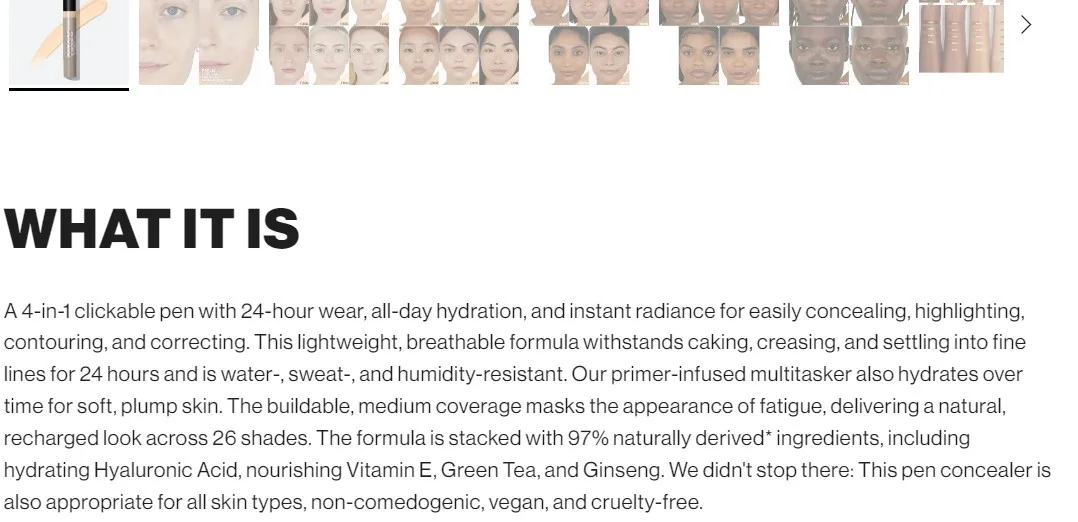
People are embracing the 5-product face and curating these minimal, edited kits for their makeup, too, rather than buckets of random products.
It’s about investing in quality essentials that cover all your beauty bases without any excess.
Clean beauty’s focus is on the use of non-toxic and safe ingredients.
By 2024, the global market for clean beauty is projected to achieve a value of $22 billion.
There’s been this huge push towards using more natural ingredients derived from plants and away from harsh synthetic chemicals, parabens, and sulfates.
66% of individuals aged 13-39 are inclined to purchase a personal care or beauty item with a “clean” label.
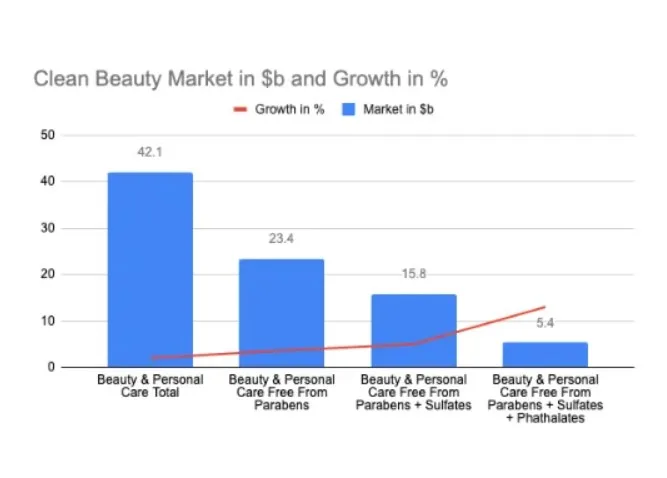
Smaller brands like Youth to the People have been real pioneers, creating formulas like their superfood antioxidant cleanser.
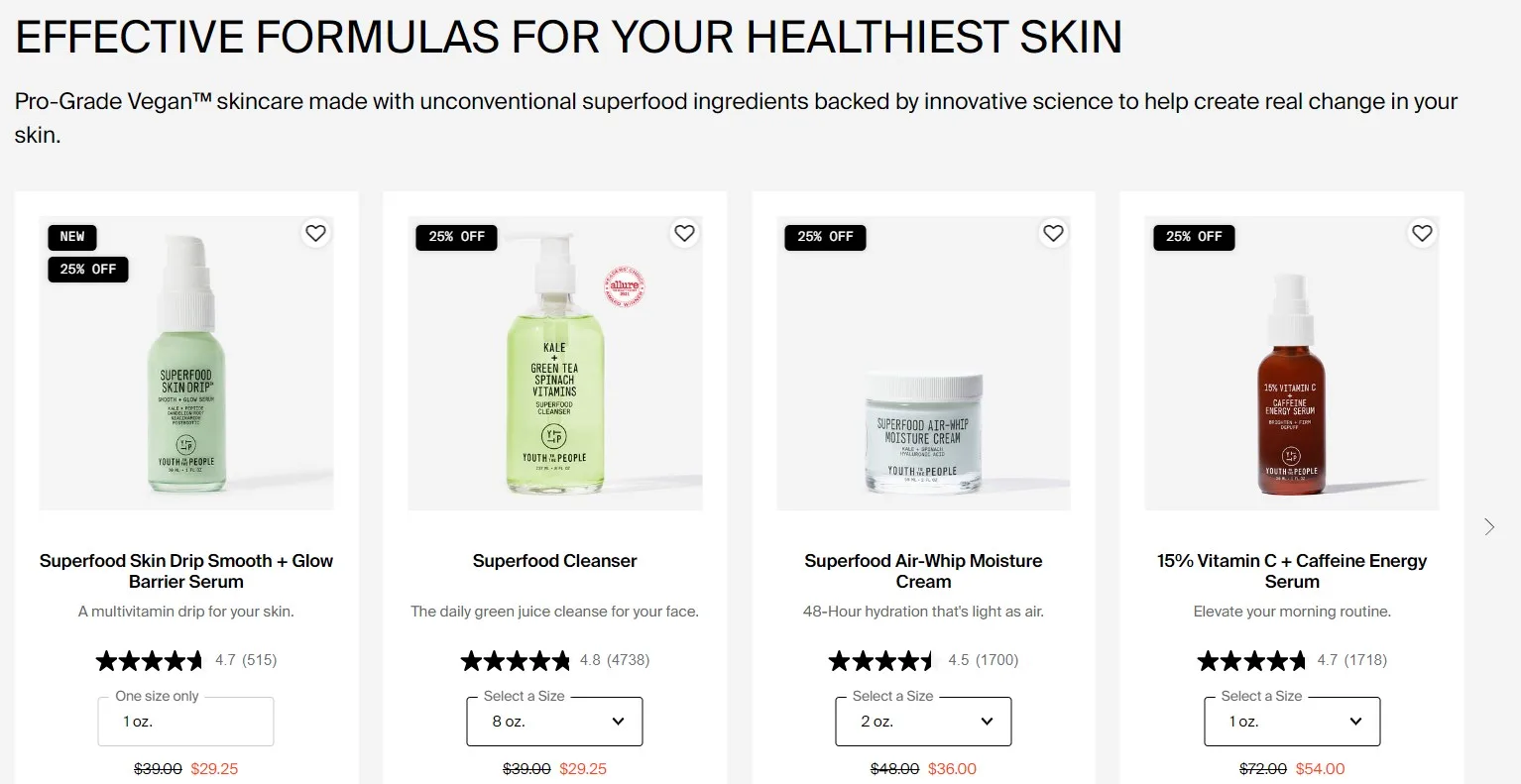
But now, even Garnier and other mainstream brands are coming out with entire natural ingredient product lines to follow in the clean beauty marketing trend footsteps.

The scientists are really taking things to a whole new level with advanced, lab-grown ingredients and bioengineered formulas.
It is projected that the biotech beauty ingredients market will increase to $3.01 billion by 2027, with a CAGR of 9.3%.
Instead of just sourcing natural ingredients the traditional way, they can actually bioengineer active compounds like vitamins and antioxidants at a molecular level.
Using fermentation methods and plant stem cell technologies. They can cultivate concentrated, supercharged versions of ingredients that supposedly pack way more potency.
That’s what brands like Biossance are doing with their squalane. Instead of extracting it from sharks like conventional squalane, they bioengineer it using 100% plant-based sugars.
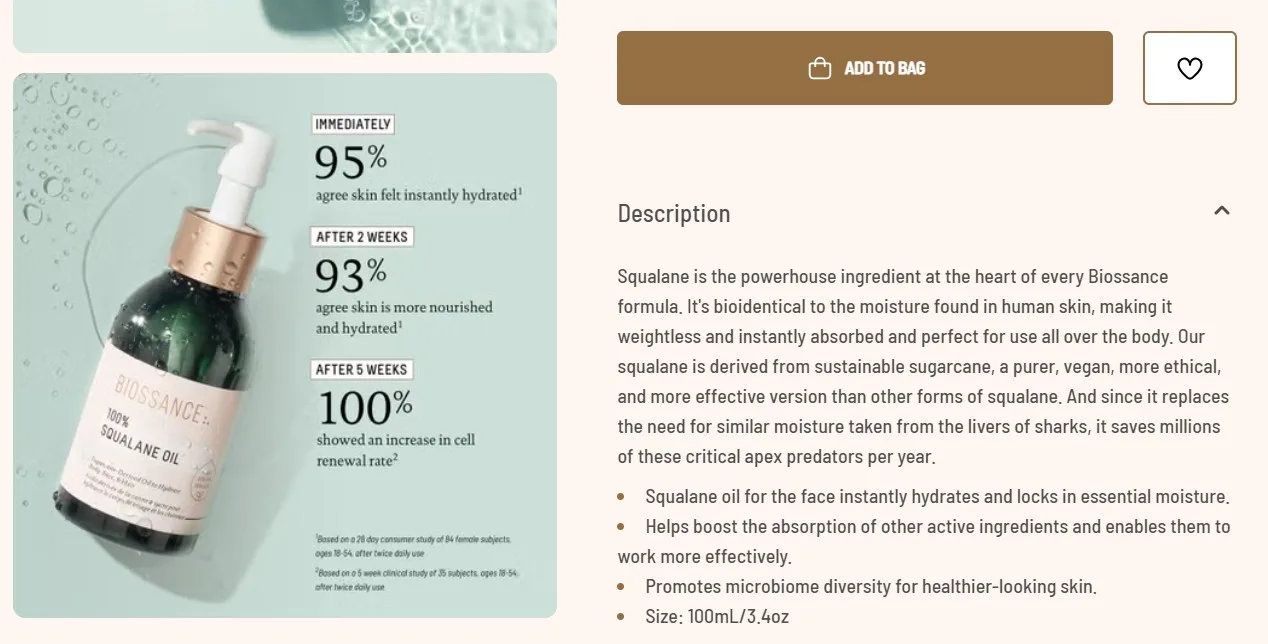
With that, they are marketing their products as clean products, too.
The result is this ultra-refined, sustainable version that’s been a game changer in their glowy serums and hydrators.
Another brand utilizing biotechnology is EighteenB. They are developing their skincare products with silk protein technology.

Between the lab-cultured ingredients and these molecular biohacking techniques, it’s like an entirely new frontier for beauty products is opening up.
Social commerce is witnessing a huge surge in popularity as a beauty marketing trend. 34% of customers have bought a product through social media in 2024.
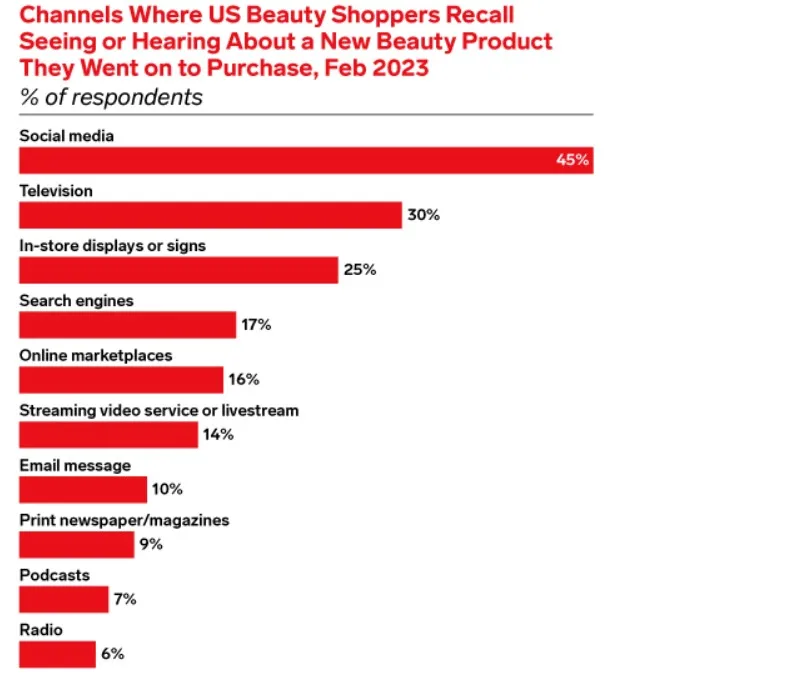
This graph demonstrates which channel influences shoppers to buy beauty products the most.
Social media is the most effective option out of all the other channels, which are TV, emails, store displays, search engines, podcasts, newspapers and magazines, online marketplaces, etc.
Those “View Product” stickers on Instagram stories and in-feed shoppable posts are very effective as a marketing strategy.

Summer Fridays’ Instagram shop has a complete product catalog that tells the pricing of each product.
Brands have been masters at this social selling on Instagram for a while now.
You’ll see influencers or celebs wearing an outfit – there are instantly shoppable tags identifying every covetable piece they’re wearing.
One tap, and it’s added to your cart! Companies like Makeup Revolution have masterеd this influencer-driven social commerce model.
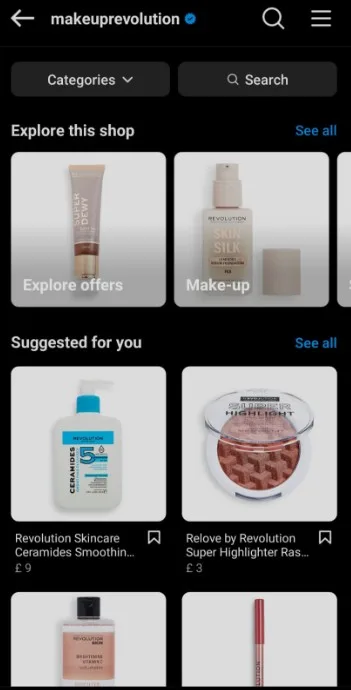
But TikTok has really been the new frontier for this trend lately. With their viral content and #TikTokMadeMeBuyIt phenomenon, they’ve become a social shopping hub.
Brands are on the app all the time with TikTok shops, product links on videos, and paid collaborations.
e.l.f. Cosmetics has been winning the social commerce game across multiple platforms.

Their @elfcosmeticsofficial TikTok account is a shopping inspiration with tutorials showing off new product drops that you can instantly purchase through the videos.

They’re always first-movers on new social selling features.
Even Facebook is doubling down on social commerce for brands through immersive storefronts on Pages, shopping tabs, live streamable events, and more.
Nearly 20% of American consumers and 25% of GenZ consumers believe they are excluded from beauty ads.
You are finally starting to see some changes as brands realize the unmet needs of older consumers.
Leveraging the beauty marketing trends, they are creating products and campaigns tailored specifically to more mature ages like Gen X, Boomers, and beyond.
86% of beauty product users seek authentic signs of aging in beauty/grooming advertisements.
Brands are not pushing the same anti-aging creams and hair dye coverups.
They are expanding into whole new categories celebrating the realities of getting older – gray hair enhancers, solutions for thinning hair, skin care for menopausal needs, and so much more.
Just look at brands like Better Not Younger that are utilizing age-inclusive marketing strategies with targeted product lines.
The brand is leading the charge in promoting beauty made for women in their 40s, 50s, and beyond.
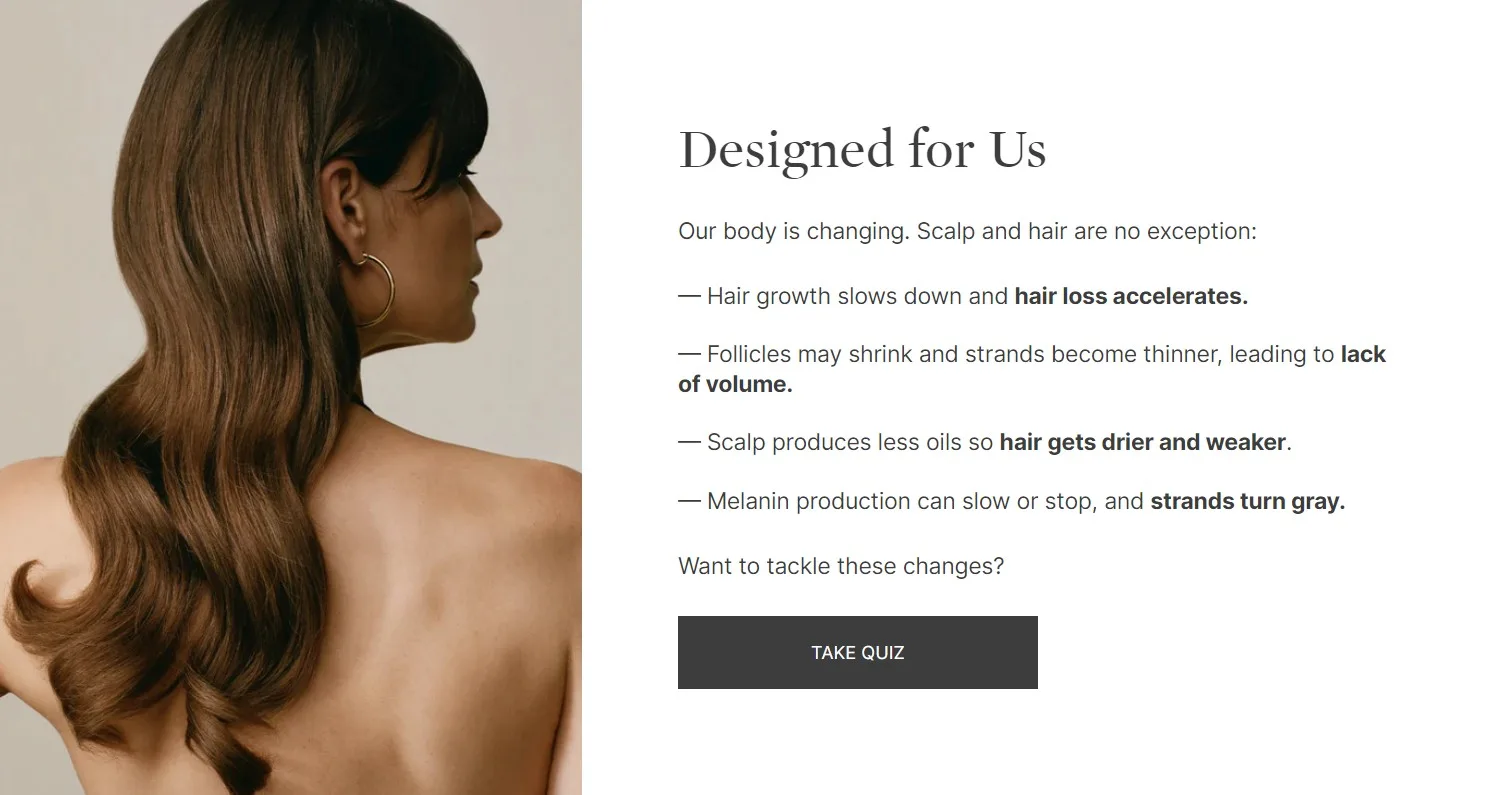
Their Hair Resurrection biomimetic formula is designed to revive aging hair from the inside out versus just slapping on another tint.
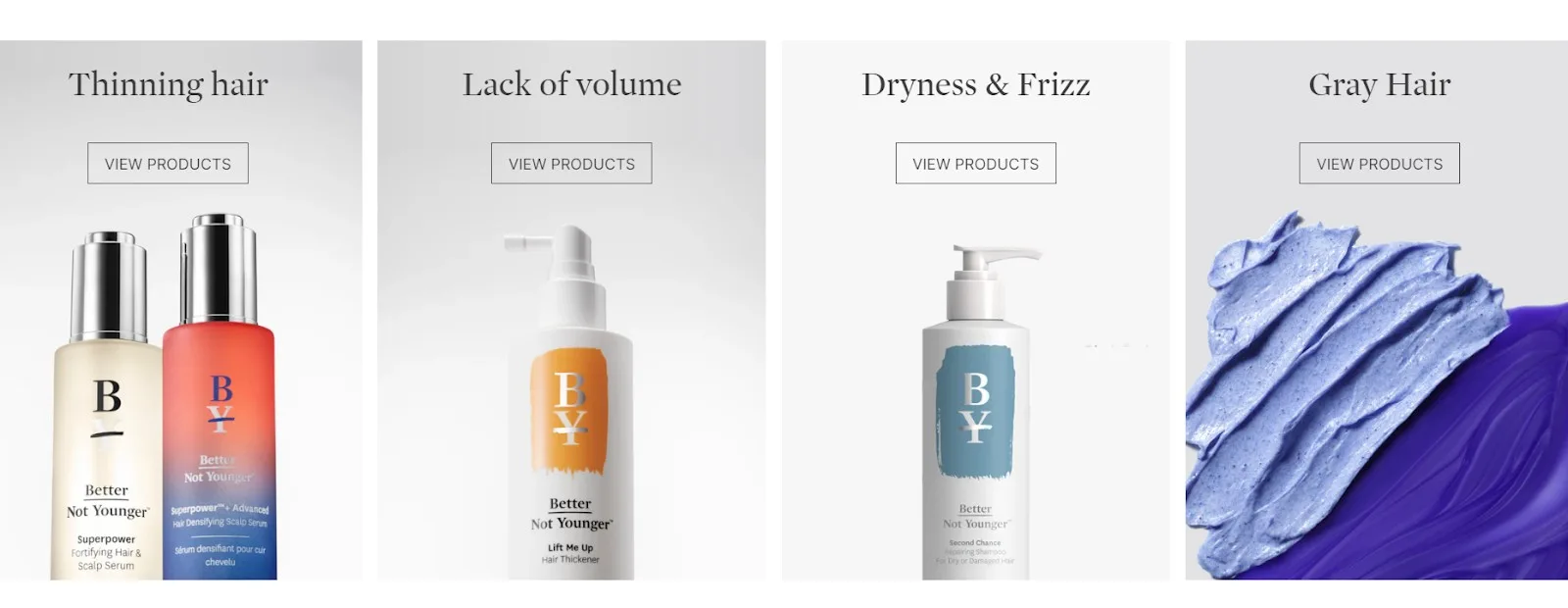
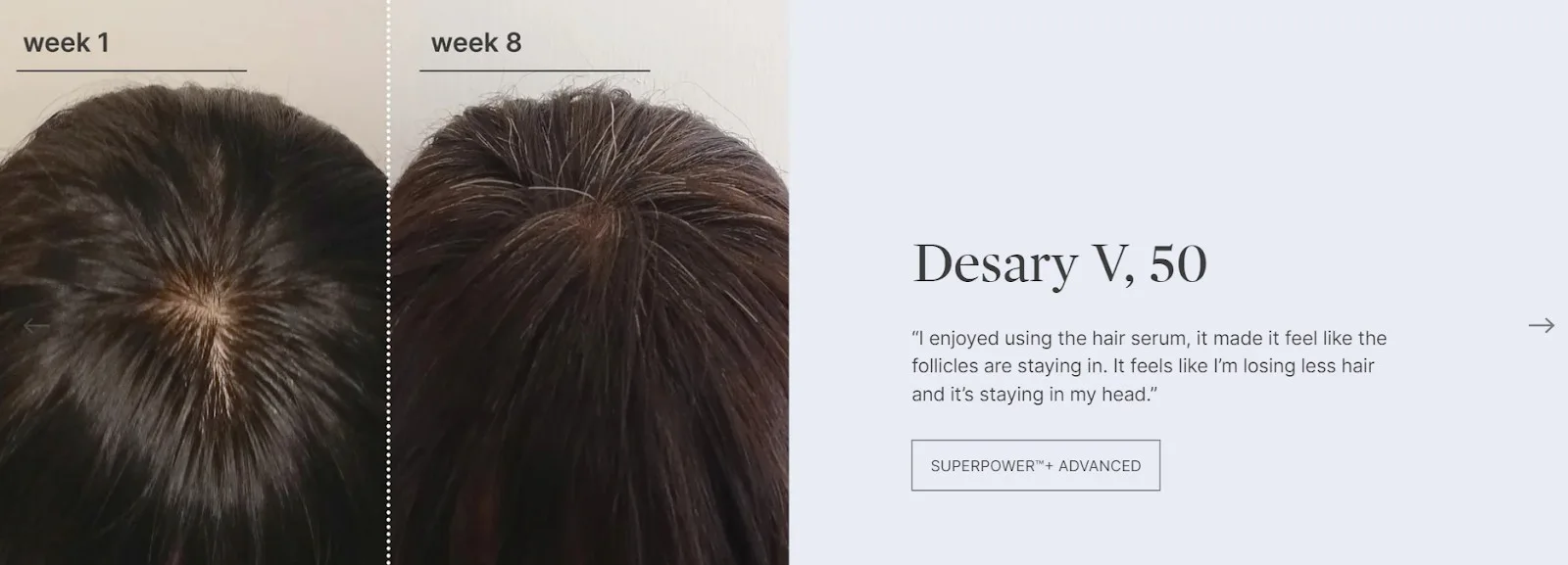
When it comes to makeup, there’s Gee Beauty.
They brought a fresh new look to mature makeup by developing flattering shades, hydrating formulas, and tools specifically for boomer complexions and beyond.

Brands like Charlotte Tilbury are also widening their range.
They are developing menopause-friendly or age-enriched product lines tailored to the 40+ crowd.

It’s so refreshing to see their campaigns and messaging finally represent people across all life stages and ages, too.
We’re also seeing beauty content creators and influencers proudly embracing their grays and wrinkles online and showing how to age beautifully.

Brands are taking notice and working with these “gray-suaders” who are flipping the narrative on aging.
Has anyone else noticed just how many tween and pre-teen girls have been flocking to the skincare aisles lately? You can definitely see it at Sephora and Ulta!
Almost 50% of tween girls are using skincare.
TikTok videos by North Kardashian West get millions of views, and the products she uses get all the hype on social media.

Due to the tween influencer product promotion, over 50% of kids aged 6 to 16 are interested in purchasing a product endorsed by an online content creator or influencer.
For so long, the youth skincare options, such as a basic cleanser and zit cream, were pretty lacking.
But brands have wisened up to the fact that young adolescent skin has its own very real, very specific needs as it’s going through puberty.
When hitting up your local Sephora, you will see brands getting intentional about creating gentle, effective lines formulated for those delicate tween complexions.
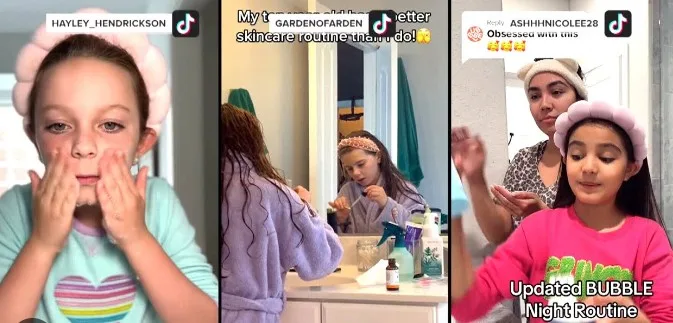
There are brands like No Nasties that are coming out with youth-centric brands to get into the tween market.
No Nasties launched a line, MeBeMe, and brought out an entire skincare range for tweens.
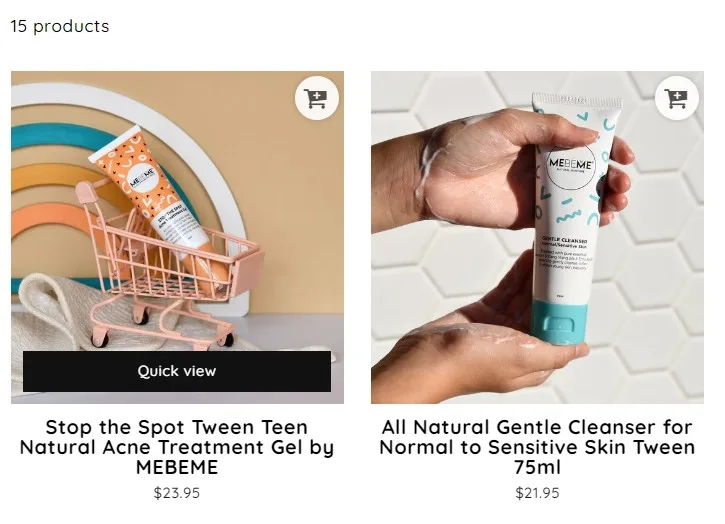
They offer clarifying, balancing formulas but without any of the harsh actives or fragrances that could be a lot for a youngster’s skin.
Brands are encouraging young people to create positive habits and personally empowering routines from an early age.
The tween consumers may be young, but they’ve got buying power and skincare urgency.
Another great beauty marketing trend is the integration of AI. More and more brands are utilizing the power of AI in their businesses.
The worldwide market size for Artificial Intelligence (AI) in the Beauty and Cosmetics industry is anticipated to grow to US$ 13.34 Billion by 2030.
73% of mobile device users have bought beauty products after getting targeted messages from an AI beauty tool.
Ulta is a great example of all the newest AI tech they’ve been adding to their beauty shopping experience lately.
They’re really at the forefront of using artificial intelligence to reimagine how we discover and test out products. Take their GLAMlab feature in the Ulta app, for example.
Using just your phone’s camera, you can virtually try on thousands of lipstick, eyeshadow, and eyeliner shades before ever stepping foot in a store.
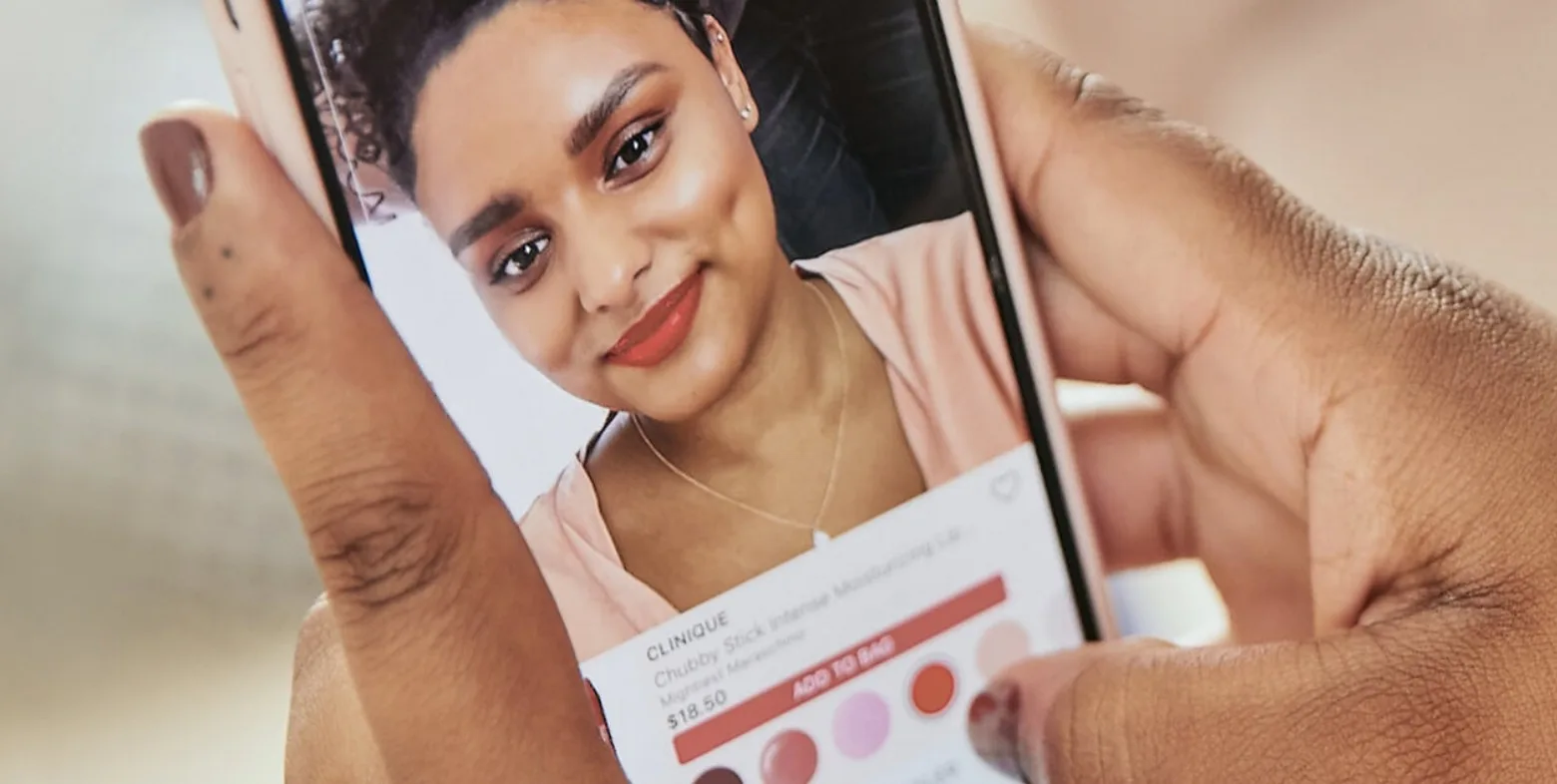
The AI seamlessly detects your face, and using machine learning, it applies this hyper-realistic 3D makeup look in real-time that moves along with your expressions.
But one of the best parts is all the work their AI does behind the scenes, too.
They have machines that can precisely scan and recreate the exact texture, finish, and color details of physical makeup products in a digital format.
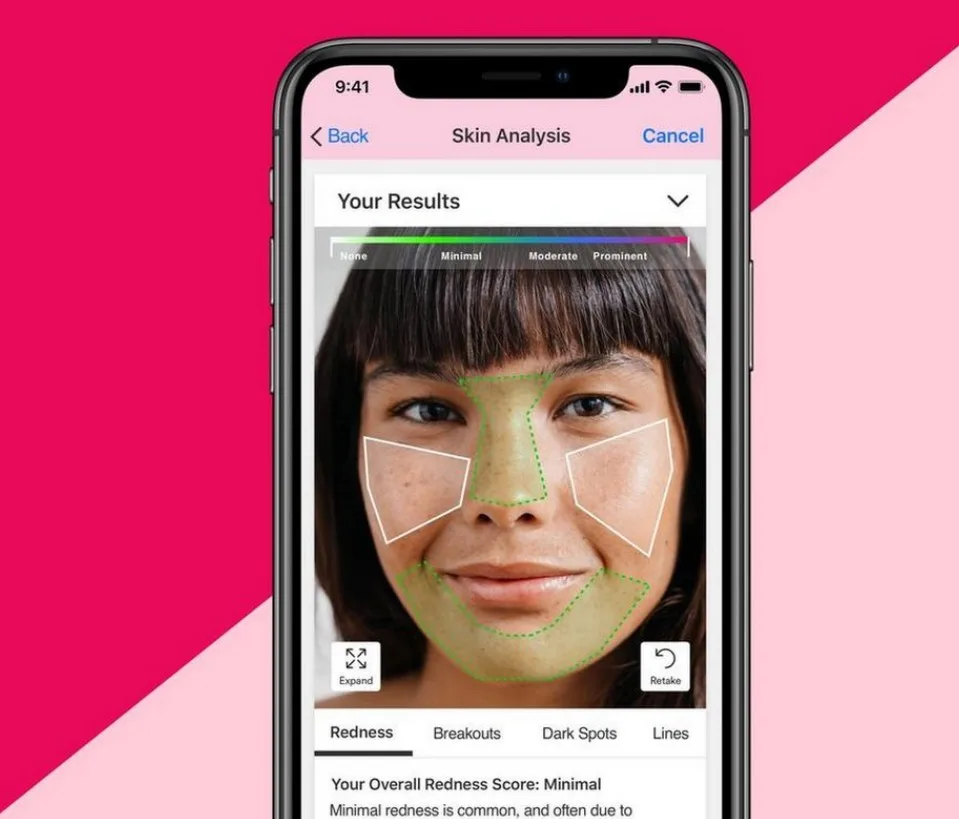
Then, the AI analyzes your skin and uses all that data to provide personalized product recommendations and foundation shade matches.
You can get an AI-powered skincare analysis with tailored routine suggestions.
Ulta is doubling down on prioritizing AI as a core part of its innovation strategy.
They’ve made huge investments in bringing AI startups like GlamST in-house and forging partnerships with cutting-edge companies working on AI personalization engines.
Vegan as a beauty marketing trend is increasing in popularity. The global vegan beauty market is forecasted to grow to USD 32.56 billion by 2032 from USD 19.21 billion in 2024.
You know that little “Vegan” symbol and claim is absolutely everywhere in the beauty aisles lately! It’s like the new “It” factor that everybody wants a piece of.
85% of consumers regularly use cosmetics products that are both cruelty-free and vegan.
Earlier, vegan options in skincare, makeup, and haircare were very limited – usually just a few indie brands catering to that ethical consumer base.
But now that plant-based living has gone fully mainstream, we’re seeing an explosion of bigger brands racing to meet the demand for animal-free beauty.
Getting cruelty-free and vegan certifications from organizations like PETA and Leaping Bunny is becoming so common, too.
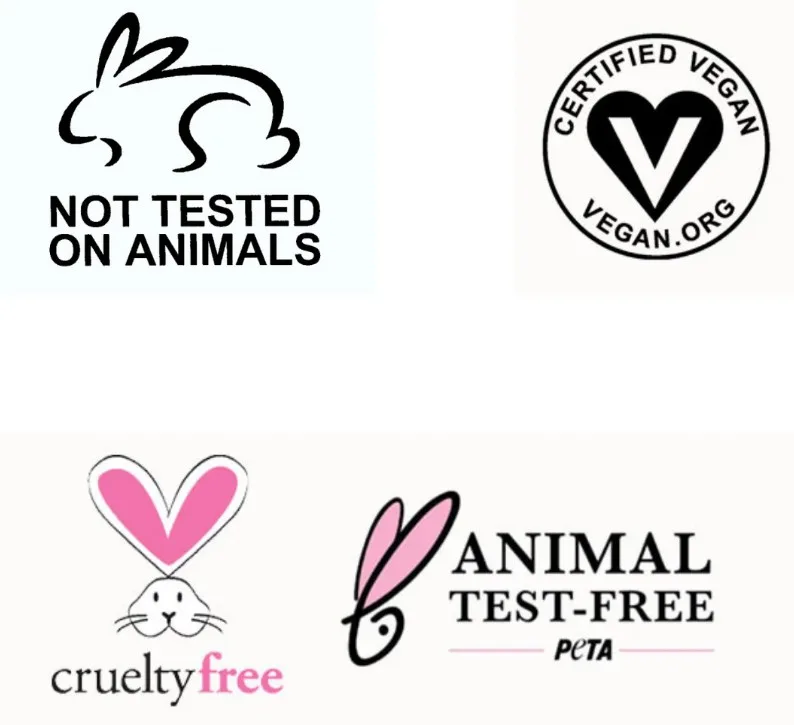
Consumers really want those reassurances that no animals were tested on and no animal-derived ingredients were used at all.
Just look at how many legacy brands have been scrambling to get their vegan cred in order.
Too Faced has completely overhauled to remove beeswax, lanolin, and any other animal ingredients from their makeup offerings.

Youth to the People revolutionized vegan skincare by using creative plant-based substitutes for traditional ingredients.
Their Superberry Hydrate + Glow Dream Mask gets its luxe texture from vegan squalane and plant oils versus animal fats.
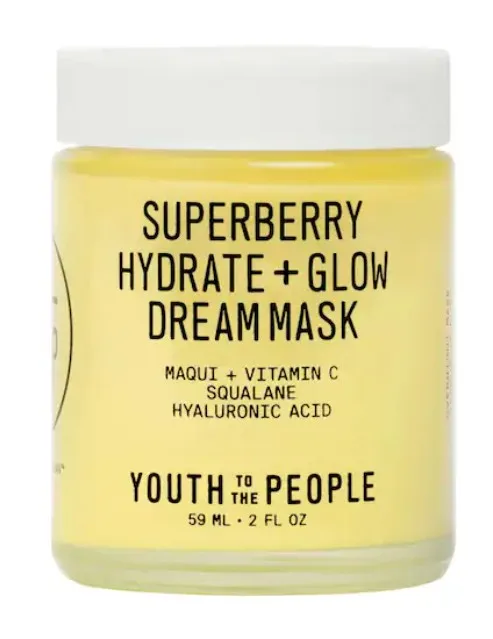

But now they’re getting tons of new competition from brands like e.l.f. who recently went fully vegan and cruelty-free with their makeup collections.

The wellness industry saw a successful end to the year, with revenue reaching $564.40 billion in 2022.
Going with the latest beauty marketing trends, skincare and makeup brands are taking a much more comprehensive, inside-out approach by highlighting the overall health aspects of their products and routines.
49% of individuals believe that beauty advertisements should promote positive self-esteem.
It starts with how many skincare brands are leaning into the functional food space – supplements and ingestibles designed to nourish your beauty from within.
Brands like HUM Nutrition and The Beauty Chef have entire lines devoted to skin-feeding powders, gummies, and capsules packed with ingredients like collagen, probiotics, biotin, and antioxidants.



Even mainstream beauty giants like Ole Henriksen are on this beauty trend with their Brightening Banana Bright line infused with vitamin C and turmeric supplements.


You also see a huge wellness slant in the skincare formulations themselves, with brands prioritizing holistic, clean ingredient decks centered around botanicals and superfoods.
Tata Harper’s entire farm-to-face philosophy prioritizes this wholesome, high-vibration approach to skincare.
Their science centers are located on their farms so that beauty chemists do not have to outsource the required products.

Makeup brands are encouraging wellness rituals and self-love practices as part of their application process and marketing.
Perfume brands are exploring aromatherapy benefits and mood-boosting scents.

It feels like an intentional shift to position beauty as not something trivial but a whole lifestyle and mindset that nurtures yourself fully – body, mind, and soul.
Traditional celebrity endorsements and glossy ad campaigns still have their place, but these days, nothing works for consumers like authentic, relatable social media influencers and user-generated content. If you are looking for examples, here are some brilliant examples of content marketing for your inspiration.
Influencer marketing is utilized by 60% of beauty and fashion companies in their marketing strategies. People trust word of mouth and “real life” testimonials so much more.
China’s Li Jiaqi, also known as “lipstick brother,” a popular livestream salesman, managed to sell $1.9 billion worth of beauty products during his first livestream day.
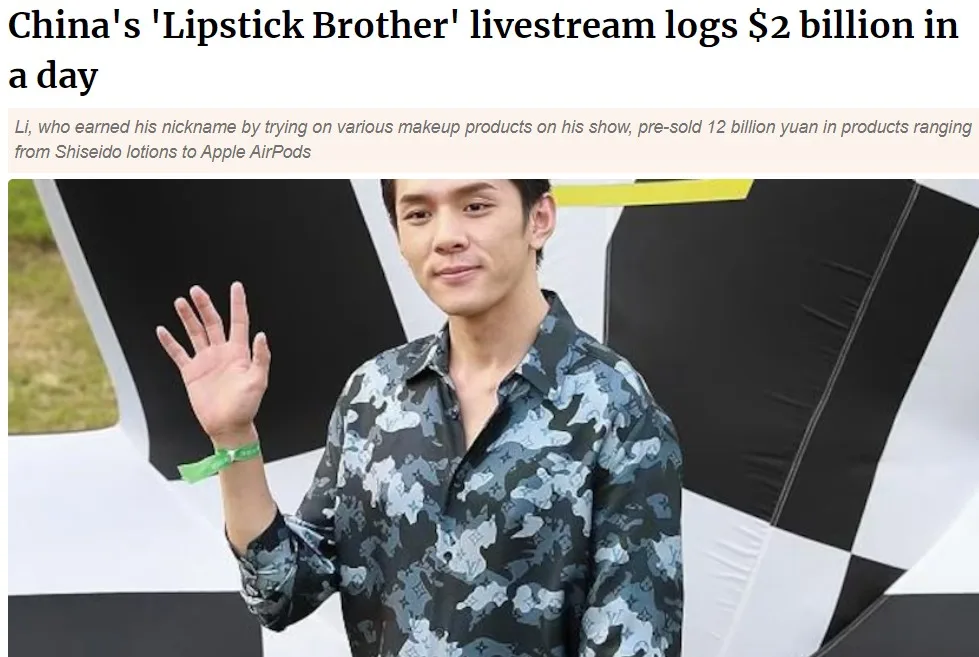
It’s really been a game-changer for the beauty industry to tap into that sense of community and peer approval on social media.
Brands have gotten sharp about cultivating a lot of influencers – from the mega names to the micro-influencers who hype up their products.
Clinique roped in mega-celebrities like Radhika Apte and Emilia Clarke for their new product launch, which was a custom-blend skin hydrator.
With the help of this campaign, they targeted their huge fan base and spread out the message of inclusivity about how all skin tones can use that product range.

Another example is Glossier, which largely skipped over traditional advertising altogether to instead build its whole identity around user-generated content and having “Glossier girl” fans.
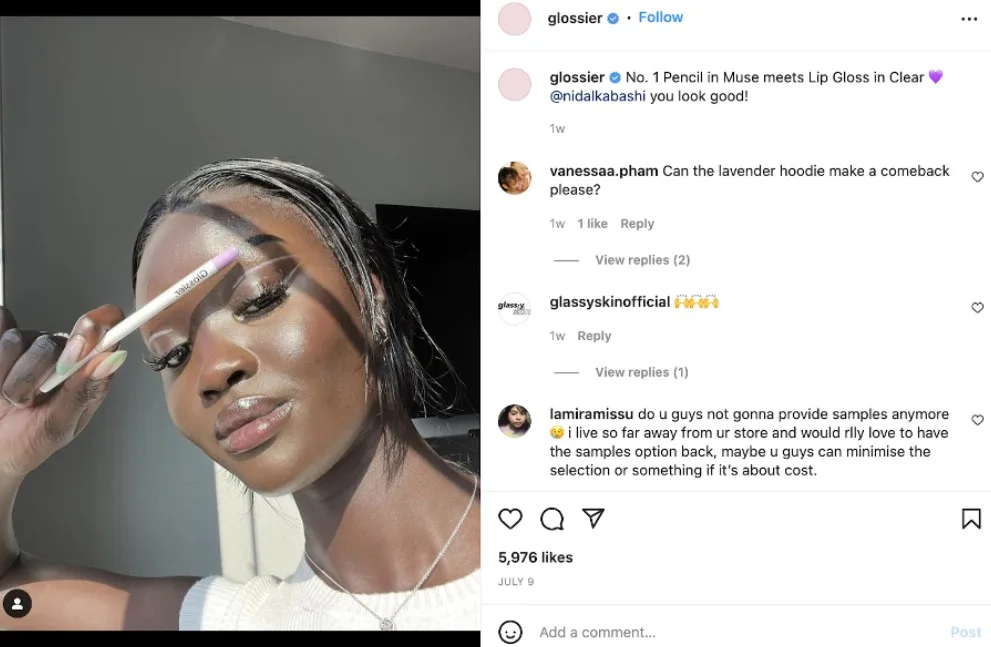
This kind of user-generated marketing creates a word-of-mouth network effect where their products feel accessible and friend-approved.
Even the big legacy brands like Benefit have wised up to the power of real, user-driven social proof when it comes to marketing their beauty products.
You will often see them reposting customer reviews and selfies across their own channels as part of their marketing mix.
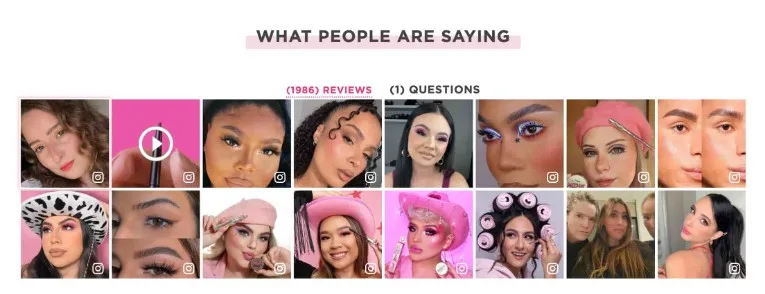
Have you noticed just how normalized and mainstream men’s beauty routines have become lately? It is growing tremendously as a beauty advertising trend.
Men’s grooming products will hit USD 75.09 billion by 2029.
For so long, the personal care aisles were dominated by products distinctly separated into the pink tax-laden “feminine” section and the same old choices for men.
Now you’re seeing that entire skincare, haircare, and cosmetic lines are thoughtfully developed with men in mind.
79% of individuals seek out individuals of all genders/identities in a beauty product.
Brands like Bulldog disrupted the market with their man-centric skincare solutions focused on natural ingredients.
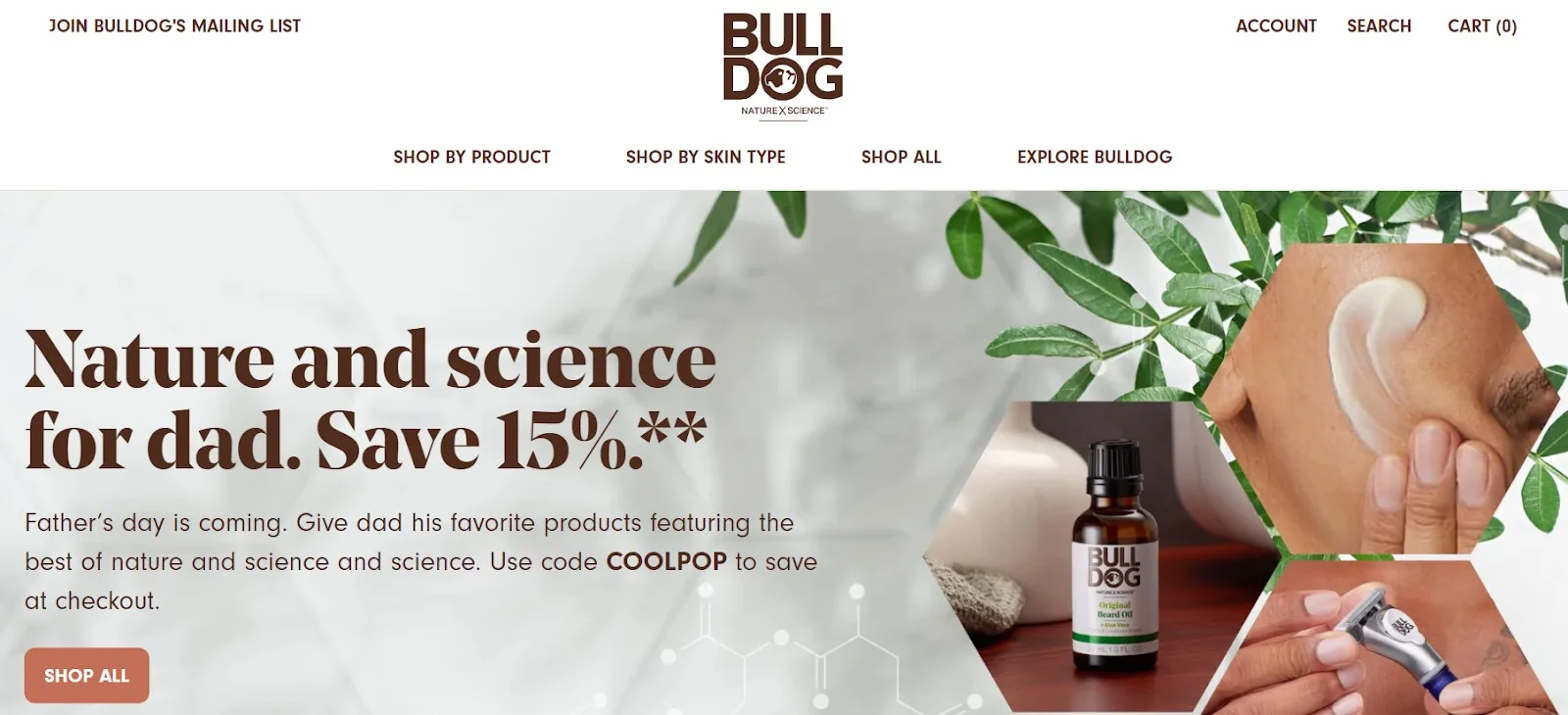
Men are enthusiastically embracing skincare, investing in serums, moisturizers, and anti-aging treatments. Celebs and influencers are helping normalize masculine beauty.
With the rising demand for men’s skincare, Dove launched a whole Men+Care line.
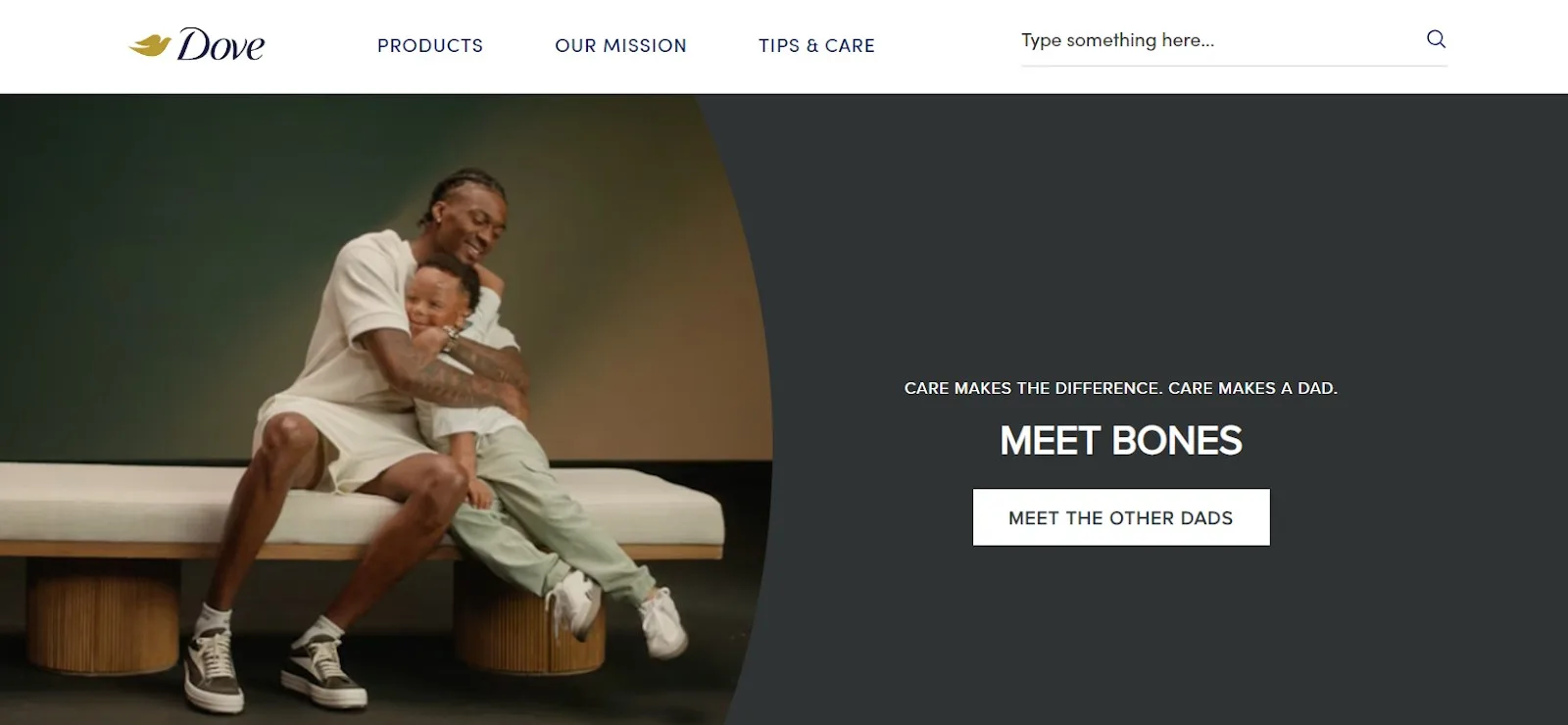
In recent years, the beauty industry has experienced a full revitalization due to new innovations, cultural changes, and evolving consumer preferences.
Observing how quickly brands have adapted to fulfill the current desires for sustainable, inclusive, personalized, and technology-driven beauty experiences has been truly remarkable.
The growth of minimalist skincare and clean beauty as a beauty marketing trend, along with the popularity of AI-driven virtual try-ons and personalized product suggestions, signifies that beauty technology is maturing.
Social media now serves as a lively shopping hub, and biotech advancements are expanding the limits of formulation capabilities.
Essentially, there has been a significant shift in the definition of beauty for 2024 and the future.
It’s no longer only about appearance but about nurturing self-care, wellness, and ethical awareness from within.
Age-inclusivity and diversity are now being recognized and embraced as the standard rather than unique ideals.


